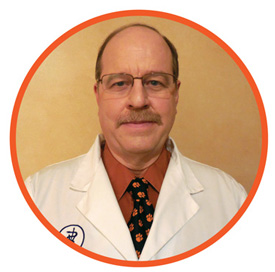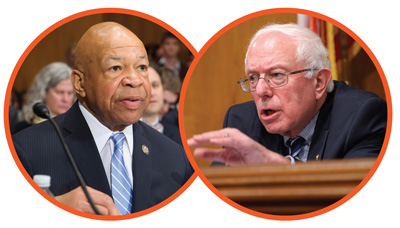Generic drugs, skyrocketing prices
The first sentence of the email message was simply this: “Exorbitant drug price increases.”
Dr. Ron Gaskin continued by citing 1,000 percent increases in the price of some generic drugs. He wrote, “By current trends, it will be less than five years, and no pet owner will be able to afford drugs for their sick pet!”
Dr. Gaskin is a solo practitioner at Main Street Veterinary Service in Shakopee, Minnesota, outside of Minneapolis. He is one of the practitioners who have expressed concerns to the AVMA about dramatic price increases for certain generic drugs approved for use in humans and used in an extralabel manner in veterinary medicine. Doxycycline is a key example.
Over the years, generic prescription drugs have provided tremendous savings in human and veterinary medicine alike. According to a report on human medicine by the IMS Institute for Health Informatics, generic drugs reached 86 percent of dispensed prescriptions by 2013 in the United States.

Recently, however, the prices of some generic drugs, often older ones, have spiked by hundreds to thousands of percents. The issue has begun to gain attention in human medicine, even though most patients have insurance to buffer drug costs. In January 2014, the National Community Pharmacists Association asked for a congressional hearing on the situation.
In early October, two congressmen launched an investigation. The AVMA has been providing congressional staff with dozens of examples of how increases in drug prices have been impacting the practice of veterinary medicine.
In late November, a Senate subcommittee held a hearing to examine “Why Are Some Generic Drugs Skyrocketing In Price?” Witnesses testified that the reasons include a lack of competition among manufacturers for certain drugs as well as shortages.
Veterinarians’ concerns
Dr. Gaskin has been practicing at the same site for more than two decades. He started noticing spikes in the prices of generic human drugs about two years ago.
“It’s one drug here, one drug there, kind of spaced apart,” Dr. Gaskin said. “Sometimes it’s prefaced by a manufacturer back order, where the drug is not available, and then when the drug comes back out, it’s got a huge price increase.”

It’s one drug here, one drug there, kind of spaced apart. Sometimes it’s prefaced by a manufacturer back order, where the drug is not available, and then when the drug comes back out, it’s got a huge price increase.
- Dr. Ron Gaskin, Main Street Veterinary Service, Shakopee, Minnesota
According to Dr. Gaskin’s records, a bottle of 100 mg doxycycline tablets increased in price from $3.27 for 100 in August 2012 to $48.27 for 50 in October 2014. A 1,000-count bottle of 5 mg prednisone tablets increased in price from $10.58 in December 2011 to $102.34 in November 2014. A 1,000-count bottle of 64.8 mg phenobarbital tablets increased in price from $11.97 in August 2010 to $253.28 in October 2014.
Dr. Gaskin sometimes substitutes minocycline for doxycycline, but many dogs can’t stomach minocycline. He continues to use prednisone to treat atopy and inflammatory bowel disease in dogs and has found that the bigger pill sizes also have jumped in price. He now writes prescriptions for phenobarbital so clients know he is not making big bucks off the drug and so they can scout out the cheapest source.
With the limited number of drugs available specifically for animals, Dr. Gaskin said, “I would estimate 80 percent of the time, when we have a sick animal or we’ve got a disease or a pathologic condition, we’re probably turning to a human generic to deal with it.”
Dr. Thomas Cusick also has expressed concern about drug prices. He represents the American Animal Hospital Association on the AVMA Clinical Practitioners Advisory Committee, which advises the AVMA Council on Biologic and Therapeutic Agents. He is a solo practitioner at Watertown Animal Hospital in Watertown, Massachusetts, outside of Boston.
Most of the price spikes seem to follow shortages, in Dr. Cusick’s experience. He said, ”It is easier on the human side to make these huge jumps because the insurance companies, not most individuals, see the increase. These increases affect how some diseases are treated since owners are declining drugs that they cannot afford.”

It is easier on the human side to make these huge jumps because the insurance companies, not most individuals, see the increase. These increases affect how some diseases are treated since owners are declining drugs that they cannot afford.
- Dr. Thomas Cusick, Watertown Animal Hospital, Watertown, Massachusetts
Dr. Cusick started noticing the price increases several years ago. He had paid 8 to 12 cents per tablet for doxycycline and now pays $1.05 to $1.20 per tablet. Ophthalmic ointments were $1 to $4 per tube, then disappeared, and now are $20 or more per tube.
Drs. Gaskin and Cusick both believe the problem originates with manufacturers discontinuing drugs that are less profitable, leading to a lack of competition. Then prices escalate because the remaining manufacturers can raise them.
Investigating the issue
On Jan. 8, 2014, B. Douglas Hoey, a registered pharmacist who is chief executive officer of the National Community Pharmacists Association, sent a letter asking for a congressional hearing. He wrote, “Over the last six months I have heard from so many of our members across the U.S. who have seen huge upswings in generic drug prices that are hurting patients and pharmacies ability to operate.”
 A member survey of nearly 1,100 pharmacists found that 77 percent each reported 26 or more instances of a large upswing in a generic drug’s acquisition price during the previous six months. Pharmacists reported patients declining medication because of higher co-pays or the Medicare coverage gap. Eighty-six percent of pharmacists said third-party payers took between two and six months to update the reimbursement rate to pharmacies, and not retroactively.
A member survey of nearly 1,100 pharmacists found that 77 percent each reported 26 or more instances of a large upswing in a generic drug’s acquisition price during the previous six months. Pharmacists reported patients declining medication because of higher co-pays or the Medicare coverage gap. Eighty-six percent of pharmacists said third-party payers took between two and six months to update the reimbursement rate to pharmacies, and not retroactively.
On Oct. 2, Sen. Bernie Sanders, I-Vt., and Rep. Elijah E. Cummings, D-Md., sent letters to 14 manufacturers of generic drugs requesting information about escalating prices.
“Generic drugs were meant to help make medications affordable for the millions of Americans who rely on prescriptions to manage their health needs,” Sanders said in a statement. “We’ve got to get to the bottom of these enormous price increases.”
The letters cited data from the Healthcare Supply Chain Association on price increases for purchases of 10 generic drugs by group purchasing organizations. Doxycycline tops the list. A 500-count bottle of 100 mg tablets increased in price from a mean of $20 in October 2013 to a mean of $1,849 in April 2014.
AVMA staff reached out to congressional staff to share information because AVMA members had expressed concerns about drug prices and as part of AVMA advocacy for the continuing availability of drugs for use in animals. Dr. Ashley Morgan, an assistant director of the AVMA Governmental Relations Division, met with staff from Sanders’ and Cummings’ offices. The congressmen’s staffs requested additional examples of how drug prices are impacting veterinary medicine.
The AVMA emailed executive directors of state VMAs for assistance. Executive directors from Illinois, Kansas, North Carolina, Tennessee, Washington, and Wisconsin collected examples from members of their state VMAs. The AVMA is sharing examples with various congressional staff.
Veterinarians reported price increases for a long list of drugs—and reported difficulties in finding alternatives. Among the drugs are doxycycline, prednisone, phenobarbital, ophthalmic ointments, saline solution, and ketoconazole. Many of the drugs on the list have had shortages.
Congressional hearing
On Nov. 20, the Subcommittee on Primary Health and Aging under the Senate’s Committee on Health, Education, Labor, and Pensions held a hearing on price increases for generic drugs. The chief executive officers of three manufacturers were invited but did not attend.

“No doubt, there are certainly legitimate reasons to increase the price of drugs on occasion,” Cummings said in his testimony. “But I believe some companies are exploiting monopolies and disruptions in supply to implement massive price increases in order to reap unconscionable profits.”
Stephen W. Schondelmeyer, PharmD, of the University of Minnesota College of Pharmacy testified that a third of a sample of 280 generic drugs had price increases in 2013, “not price decreases, as we normally expect.” According to his longer written testimony, 27 of the drugs in the sample had an increase of 50 percent or more in 2013. The market basket was based on outpatient prescription drugs widely used by older Americans.
Robert Frankil, a registered pharmacist who owns Sellersville Pharmacy in Sellersville, Pennsylvania, testified about how community pharmacists are struggling with price spikes for generic drugs. Carol Ann Riha of West Des Moines, Iowa, testified about how she and her husband, early retirees, are coping with the price increases on a fixed income.
In his written testimony, Scott Gottlieb, MD, of the American Enterprise Institute noted that drug prices rise when shortages of drugs or active ingredients exist or when manufacturers exit the market. According to an analysis by the Food and Drug Administration, a generic version of a brand-name drug needs at least four manufacturers for the price to decrease to about 40 percent of the price of the brand-name drug.
In his spoken testimony, Dr. Gottlieb noted that certain lower-volume drugs have fewer manufacturers and, therefore, higher prices. He also pointed to barriers to entry to the generic market, including regulatory requirements.
Aaron S. Kesselheim, MD, of Harvard Medical School said reasons that competition can fail in the generic market include business decisions, fluctuations in supply and demand, and anti-competitive behavior by sellers or purchasers. He suggested that solutions could include reporting of certain price increases to the Department of Health and Human Services, fast-tracking approvals for certain market entrants by the FDA, intervention by the Federal Trade Commission, and interventions by government payers.
Actions and reactions
Ralph G. Neas, president of the Generic Pharmaceutical Association, said in a statement responding to the hearing that the congressional investigation is focusing on 10 examples “in a marketplace of more than 12,000 safe, affordable generic medicines.”
“In fact, thousands of generics have seen significant price erosion over time due to the competitive nature of the marketplace,” Neas said.
On the same day as the hearing, Sanders and Cummings introduced legislation to require manufacturers of generic drugs to provide a rebate to Medicaid if prices rise faster than inflation. Manufacturers of brand-name drugs already must do so.
Also in November, the Department of Justice issued subpoenas to two manufacturers of generic drugs, as disclosed in company filings with the Securities and Exchange Commission. Each company received a subpoena requesting documents relating to communications or correspondence with competitors regarding the sale of generic prescription medications.
Dr. Cusick said it will be interesting to see what happens, but he remains frustrated with practitioners’ lack of options.
“So, it’s probably as much about educating our clients that we have no control over these huge price increases by drug manufacturers,” he said.